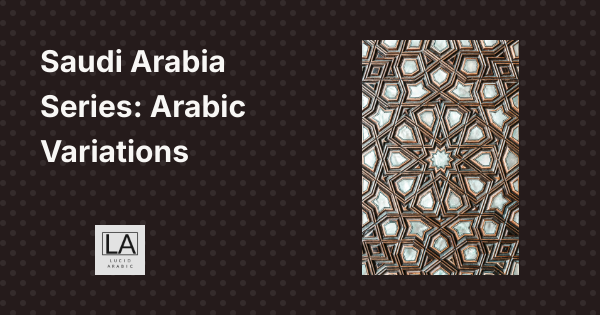Discover the Top 5 Language Variations in Saudi Arabia: Unveiling Their Richness and Charm
Saudi Arabia’s linguistic landscape is as diverse as it is fascinating. Understanding the variations in Arabic used in different contexts not only deepens your appreciation for the language but also helps you communicate more effectively. In this post, we’ll explore the top five formal language variations in Saudi Arabia, with examples to give you insight into their unique characteristics. Let’s embark on this journey together!
1. Classical Arabic: A Timeless Legacy That Unites the Arab World
Classical Arabic, also known as Fusha, is the language of the Quran and holds immense significance in the Arab world. It is used primarily in religious contexts, formal speeches, and academic writings. What sets Classical Arabic apart is its consistency across centuries. While it may seem difficult at first, learning Classical Arabic opens doors to understanding centuries of rich literature, poetry, and religious texts.
For instance, in Classical Arabic, the word “كتاب” (kitab) means “book,” and this form is universal across all Arab nations. Another example is “إنسان” (insan), meaning “human being.” These words are not typically used in everyday speech but are essential in religious and academic contexts.
2. Modern Standard Arabic: The Power Language of Media and Education
Modern Standard Arabic (MSA) is a slightly simplified version of Classical Arabic and is the formal language used in news, books, government documents, and education. It bridges the gap between different dialects across Arab countries, enabling people from different regions to communicate seamlessly.
For example, “أنا أذهب إلى المدرسة” (ana adhabu ila al-madrasah) means “I go to school” in MSA. It is more formal than its dialectal counterparts but still understood by everyone. MSA is the language of news reports, making it the most accessible version of Arabic for those interested in media, international affairs, and education.
3. Hijazi Arabic: Embrace the Warmth of Western Saudi Arabia
Hijazi Arabic is spoken in the western regions of Saudi Arabia, including cities like Jeddah, Mecca, and Medina. It has a distinct melodic tone and is influenced by trade and interaction with various cultures over the centuries. Hijazi Arabic is often used in semi-formal settings and in local media.
For instance, instead of the Modern Standard Arabic “كيف حالك؟” (kayfa haluka?), meaning “How are you?”, Hijazi speakers might say “كيف حالك؟” (keef halak?) with a softer, more casual tone. While Hijazi is not used in formal writing, it’s common in daily interactions and local TV shows.
4. Najdi Arabic: The Heart of Saudi Tradition
Najdi Arabic, spoken in the central region of Saudi Arabia, including the capital Riyadh, is the language of the Bedouins. It reflects Saudi Arabia’s cultural heritage and has a more conservative tone. This variation is often used in storytelling and poetry, where the language is more formal but still rooted in local tradition.
For example, the word “أبغى” (abgha), meaning “I want,” is commonly used in Najdi Arabic. It’s unique compared to the more general “أريد” (ureed) found in Modern Standard Arabic. Although Najdi Arabic is mostly spoken, it has deep cultural importance, especially in rural communities and traditional settings.
5. Gulf Arabic: A Friendly Language of the Eastern Province
In the eastern parts of Saudi Arabia, Gulf Arabic is prevalent. It shares similarities with the dialects spoken in neighboring Gulf countries like Kuwait and Bahrain. Gulf Arabic tends to be used in informal settings but can be heard in local business and casual conversations.
A Gulf Arabic speaker might say “شو السالفة؟” (shoo alsalfah?) to mean “What’s the matter?” This is quite different from the more formal “ما الأمر؟” (ma al-amr?) in Modern Standard Arabic. Gulf Arabic reflects the close-knit, friendly communities of the region and is an excellent way to connect with people on a more personal level.
Conclusion: Embrace the Rich Tapestry of Saudi Arabian Arabic
From Classical Arabic’s timeless elegance to the regional charm of Hijazi, Najdi, and Gulf Arabic, Saudi Arabia’s language variations offer a window into its cultural diversity. Whether you’re watching the news, engaging in formal conversations, or enjoying local poetry, each variation of Arabic enhances your understanding of this beautiful language. Embrace the richness of these linguistic forms, and you’ll open the door to more meaningful connections across the Arab world.
By exploring these variations, you can navigate both formal and casual settings with ease, ensuring your journey into Arabic is a truly enriching experience.
Feel free to discover other articles about Arabic culture and history:
Saudi Arabia: Tradition & modernity

